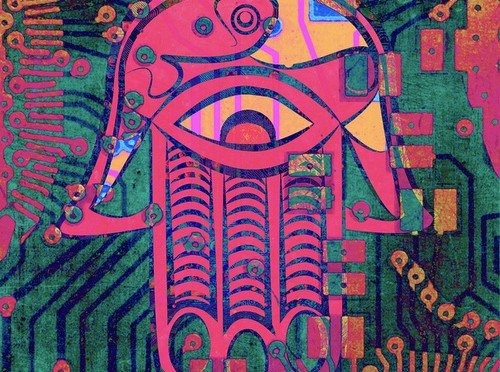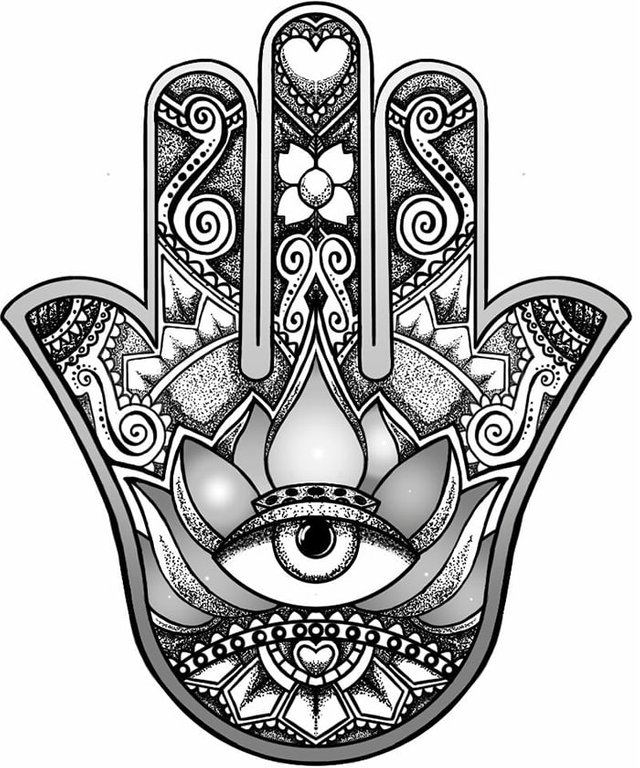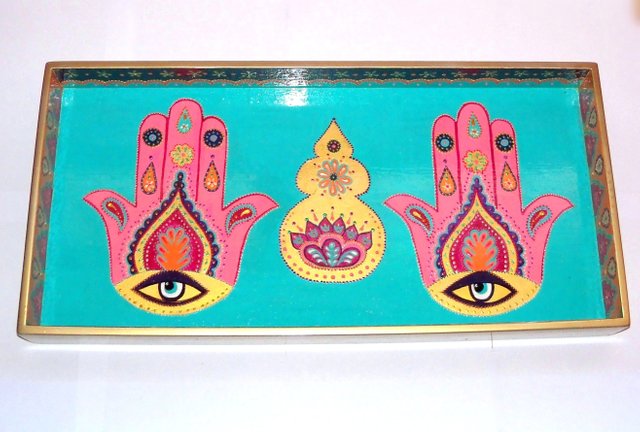"THE HAND OF FATIMA" LEGEND
The Globalization of Arab Culture
Lately the Arab culture has been popularized all over the world, so much so that many declare themselves lovers of certain foods and typical foods of this region, one of the things of the Arab culture that has had a great boom are the mandalas and although many They refer to them as a "Beautiful Drawing" few are the people who know their true meanings such is the case of what until today, I knew as, "Mandala of the Hand".


This type of mandala is known in the Arab world and in other cultures as "The hand of fatima" and there is a great legend behind it, as well as in most things that are typical in Arab culture.
THE LEGEND OF "THE HAND OF FATIMA"
There are many legends and versions of the hand of Fatima, the most accepted and shared is that Fatima (the daughter of the Prophet Muhammad) was very busy in the kitchen preparing food when her husband, Imam Ali, arrived unexpectedly.
When hearing it, Fatima went to receive it. However, she was strongly disappointed and sad to see that her husband arrived accompanied by a beautiful and young concubine (remember that in the Moroccan culture is allowed polygamy as long as you can pay).
Prudent, Fatima remained silent and, tormented by jealousy, returned to the kitchen. Tackled by sadness and despair, she paid no attention to what she was doing: she had a pot over the fire with boiling broth and, more attentive to her sadness than what she was doing, she reached inside and began to stir the soup.
It was then that Fatima realized that her hand was burning and pulled her out of the pot. Ali took care of his hand and the next day, he admitted that he had spent the night with the young concubine. That same night, Fatima spied Ali at night and saw how she was going to the girl's room again .. She followed him and peeked through the crack of the door, seeing her husband kissing the other woman, a Tears came down her cheek. Ali, suddenly, felt a great sadness in his heart and a tear came down his cheek. Realizing the love he felt for his wife and the pain he was causing her, he left the young concubine.
Since then, the hand of Fatima became an important symbol in the Muslim world since it represented patience and self-denial.
Another version, heard only in the Chaouen region, says that when her husband Ali was preparing to go to battle, she imposed her hand and prayed for him to protect him. Upon leaving happily victorious from the battle he understood that his wife's hand and his blessing had protected him and therefore he received no harm.
Many of these amulets have an eye on him which is usually blue, called "the Turkish eye" also which they say protects against the evil eye and therefore multiplies the power of the talisman.



This mandala is also known as "hamsa", it is usually a five-fingered hand, a reflection of the five virtues, looking downwards and the larger ones usually contain writings of the Qur'an apart from the eye.

